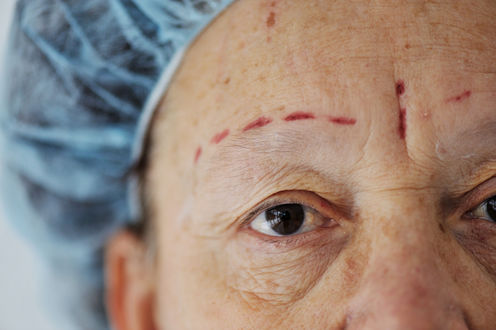
Cosmetic surgery in Australia is a billion dollar industry that has been allowed to grow with scant regulation.
Cosmetic surgery is not a recognised branch of medicine, so operators are only required to have a general medical degree. These doctors are able to operate in an environment with few minimum standards and no inspection system to ensure patients are not at increased risk of harm.
Relying on doctors alone to provide safe operating environments in such a lucrative and competitive environment is unrealistic and naive. Doctors’ commercial interests are a powerful disincentive for them to establish licensed facilities with all the checks and balances: it costs money and takes away from profits.
These were issues states and territories shared 16 years ago when I chaired the New South Wales Ministerial Inquiry into Cosmetic Surgery. Sadly, little has changed, despite the Australian health ministers examining the issue again in 2011.
The Medical Board of Australia recently released a consultation paper on how to better protect patients undergoing cosmetic surgery. But while the paper makes some good recommendations about how the sector should be reformed – including physiological assessments for minors and clear guidance on informed consent – it doesn’t address the need for oversight and regulation of doctors’ rooms.
It’s time for state and territory governments to introduce meaningful regulations to protect patients against potentially harmful practices.
How unlicensed clinics bypass regulation
Doctors can gain a competitive edge by offering cheaper cosmetic surgery than that performed in a licensed day procedure centre. Breast augmentation in a licensed facility can cost around A$10,000 while the same procedure in a clinician’s private rooms can cost around A$6,000.
While licensed facilities are required to comply with cosmetic surgery safety standards, doctors can legally perform surgical procedures such as breast augmentation in unlicensed facilities if they don’t use a general anaesthetic. Instead, they use a sedation technique called twilight therapy.
There is some evidence to suggest that twilight anaesthetic techniques performed in appropriate facilities by qualified anaesthetists are safe. This is because the anaesthetic team can easily escalate the procedure to a general anaesthetic should there be any safety problems during the procedure.
But two crucial components are required: an anaesthetist and an appropriate health facility such as a hospital or day surgery centre with safeguards, such as breathing support. Unlicensed clinics are not required to have either.
The extreme depth of a twilight anaesthetic can relax the muscles in the airway and cause problems breathing, similar to the risks of a general anaesthetic. If not managed properly, these breathing problems can lead to anoxic brain injury, when the brain is starved of oxygen, or even death.
Another key issue is that patients can be given potentially lethal doses of local anaesthetic. Local anaesthetic overdose is entirely preventable and not an incident related to allergic reactions, bad luck or unusual patient variations. It occurs when doctors inject too much.
Time for regulation
When I chaired the 1999 NSW cosmetic surgery inquiry, my colleagues and I identified a number of new risk factors: the level of drugs and drug combinations; patient assessment and selection; adequate provision for recovery and discharge; and the risks associated with lasers. These risks remain, and some are addressed in the medical board’s new consultation paper.
One of our main recommendations was to amend the legislation to require licensing for facilities where medical procedures are performed using local anaesthetic and sedation.
But while there has been discussion about introducing national standards to include high-risk procedures carried out in medical practitioners’ rooms, to date no clear pathway for this to happen has occurred.
Currently, the Australian Commission on Safety and Quality in Health Care requires health regulators to make on-site visits. If they detect a significant risk of patient harm, accrediting agencies must notify the relevant state or territory health department.
However, no such safeguards exist for high-risk procedures undertaken in medical practitioners’ consulting rooms, or another health professionals’ rooms.
The 1999 inquiry also addressed the issue of specialist qualifications. Twelve of the 13 inquiry committee members recommended that medical practitioners performing cosmetic surgical procedures should have adequate surgical training, such as that required for qualified registered surgeons.
The dissenting doctor was the Australian Medical Association representative, a group with strong membership from generally registered medical practitioners, some of whom call themselves cosmetic surgeons.
Governments’ lack of will to address patient safety issues cannot be excused because of the turf war between two sections of the medical profession. Given that a range of professions, including nurses and dentists, have now entered the lucrative cosmetic space, now is the time to act.
We now have an opportunity to implement clear guidelines for medical practitioners about their duties and obligations when performing cosmetic medical and surgical procedures. We also must ensure that minimum standards apply wherever invasive procedures are performed.
Merrilyn Walton is affiliated with the Australian Health Practitioners Regulation Agency (AHPRA). She is a Board member the Agency Management Committee (AHPRA) but writes in her personal capacity as an academic researcher, and does not represent the views of AHPRA.
